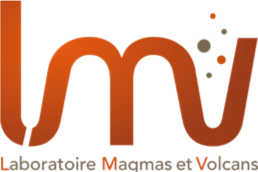Mardi 29 Septembre 2015, à 14h en salle Jean Jung
Titre du séminaire : Comment l’état thermique de la Terre profonde, ainsi que la Lune, affectent l’habitabilité de notre planète
Title: How the thermal state of the deep Earth, and the Moon, affect our planet habitability
Denis Andrault
Laboratoire Magmas et Volcans
Summary:
The Earth is a thermal engine generating the fundamental processes of geomagnetic field, plate tectonics and volcanism. Large amounts of heat are permanently lost at the surface yielding the classic view of the Earth continuously cooling down. Contrary to this conventional depiction, we propose that the temperature profile in the deep Earth has remained almost constant for the last ~3 billion years (Ga) or more. The core-mantle boundary (CMB) temperature reached the mantle solidus of 4100 (+/-300) K after complete crystallization of the magma ocean not more than 1 Ga after the Moon-forming impact. The CMB remains at a similar temperature today; seismological evidences of ultra-low velocity zones suggest partial melting in the D »-layer and, therefore, a current temperature at, or just below, the mantle solidus.
Such a steady thermal state of the CMB temperature excludes thermal buoyancy and compositional convection from being the predominant mechanisms to power the geodynamo over geological time. An alternative mechanism to produce motion in the outer core is mechanical forcing by tidal distortion and planetary precession. The conversion of gravitational and rotational energies of the Earth-Moon-Sun system to core motions could have supplied the lowermost mantle with a variable intensity heat source through geological time, due to the regime of core instabilities and/or changes in the astronomical forces. This variable heat source could explain the dramatic volcanic events that occurred in the Earth’s history. In this scenario, because the Moon is a necessary ingredient to sustain the magnetic field, the habitability on Earth appears to require the existence of a large satellite.


